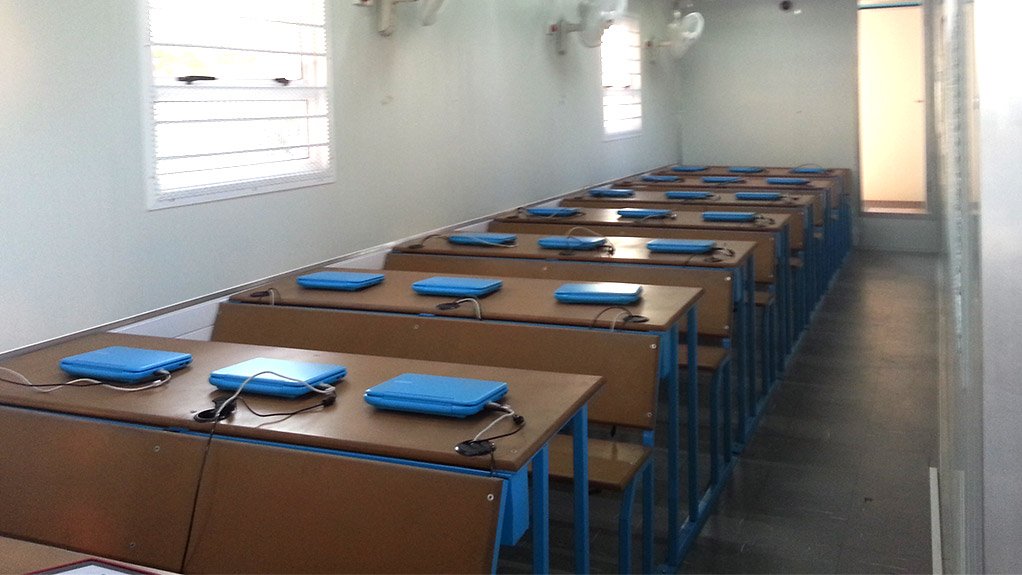
SOLAR-POWERED CLASSROOM Between 24 and 30 students use solar-powered laptops to do schoolwork and access learning materials
Solar-photovoltaic-powered school classrooms and healthcare centres are aimed at enabling electronic education and healthcare in remote and nonelectrified areas of Africa, says electronics giant Samsung Africa president and CEO Sung Yong Hong.
The classrooms use global system for mobile communications or satellite communications for Internet Protocol (IP) connectivity and 24 to 30 laptop computers in each classroom that students use to access lesson content and the Internet.
The healthcare centre has a range of diagnostic devices, including for ear, eye, in vitro and ultrasound diagnoses. The centre is also connected to the Internet to enable healthcare workers to use electronic prompts to diagnose people if they do not have the requisite skills to make a diagnosis.
Forty-foot containers are used for the centres and as classrooms, each of which is remotely monitored by IP cameras to improve their security and ensure pupil and teacher attendance.
Phomolong Secondary School, in Tembisa, has been participating in a pilot project of the digital classroom since 2011, which has resulted in underprivileged pupils learning to use computers and access learning materials, as well as teachers using the laptops and connectivity to prepare lessons, says Phomolong principal Mocheke Thoka.
“We have also seen an increase in physical science pass rates from 56% in 2011 to 84% in 2012 and mathematics pass rates improved from 51% to 76% last year. This is because teachers can prepare their lessons and present them in a structured manner, which improves pupils’ comprehension.”
Further, the cluster of containers and trucks, collectively called a digital village, is supplemented by a standalone solar power generator, which converts sunlight into direct current using photovoltaic panels.
Electricity from the solar panels passes through an inverter and is then stored in deep-cycle gel batteries to provide power for all devices and to light-emitting diode lamps for 24 hours a day. The batteries, once fully charged, can provide power to the digital village for up to four days without receiving electricity from the solar panels during prolonged rainy weather, says Samsung Electronics South Africa business-to-business head Manoj Bhoola.
“Most parts of Africa experience about 2 050 hours of sunshine a year, making solar power generation a natural, viable and sustainable option for the continent,” says Hong.
The 15 kVA generator costs about R300 000 and provides electricity for all the devices in the digital village for up to eight years without significant mainte-nance. The return on investment is 18 months, once fully deployed.
X-ray machines require three-phase alternating current and are, thus, currently not included in the healthcare centre.
Medical waste from the mobile general practitioner unit and mother and child centre –built on a four-ton truck that travels between villages and population centres – as well as from the healthcare centre, is placed in bins and then collected for incineration.
“The digital village systems can also be deployed to supplement existing brick and mortar schools and healthcare centres. The solar power generator can also be used to offset electricity consumption, enabling schools to use grant money to expand or to fund additional activities that they could not afford previously,” says Samsung Africa public affairs head Ntutule Tshenye.
“It makes sense for Africa to exploit the renewable and environment-friendly natural resource of the sun’s energy and combine this with cost-effective solutions and mobility to provide learning and teaching benefits, healthcare, government services and business opportunities where there are electricity shortages or in com- munities that are not connected to national electricity grids,” concludes Hong.